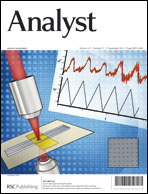Detection is an essential aspect in analytical approaches. In liquid phase separations, many attempts have been focused on the capability to detect a partial or an entire column. However, detection in both spatial and temporal resolutions has not gained much attention yet. Here we present the concept of spatio-temporally resolved detection (STRD) and a proof-of-the-concept microchip electrophoresis (MCE)-STRD system. The MCE-STRD system was mainly composed of a microchip and an STRD unit, which were designed completely based on the requirements for spatial and temporal resolutions. In the STRD unit, a linear light beam expanded from a UV LED light source was employed to illuminate the whole separation channel of the microchip while a linear CCD sensor that has an identical effective length as the separation channel and more pixels per unit length was used to detect the absorbance signals through the separation channel. As each pixel of the CCD sensor can detect a corresponding channel space in real time, the CCD provides both spatial and temporal resolutions. A significant advantage of STRD over conventional detection schemes is its capability for monitoring the dynamic processes of molecular events occurring in the separation channel. This was demonstrated through the monitoring of the dynamic processes of protein–DNA and protein–drug interactions in chip isoelectric focusing (chip IEF). The MCE-STRD system provided not only whole pictures of the entire dynamic processes at-a-glance but also quantitative kinetic information (dissociation rate constants) of the dynamic processes. With further development, we anticipate that STRD could be a promising tool for the characterization of biomolecular interactions and the observation of migration behaviours of analytes.

You have access to this article
 Please wait while we load your content...
Something went wrong. Try again?
Please wait while we load your content...
Something went wrong. Try again?


 Please wait while we load your content...
Please wait while we load your content...